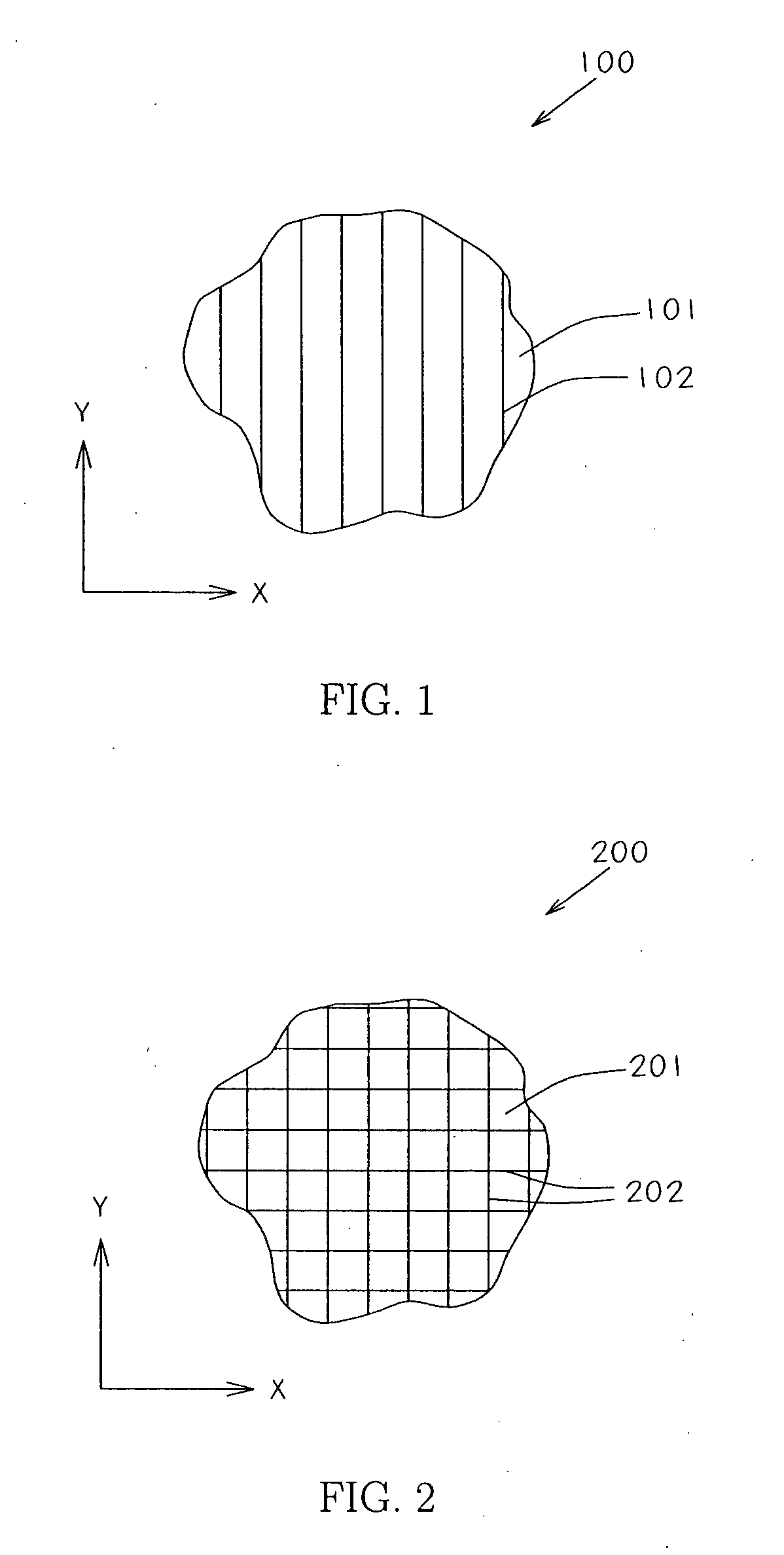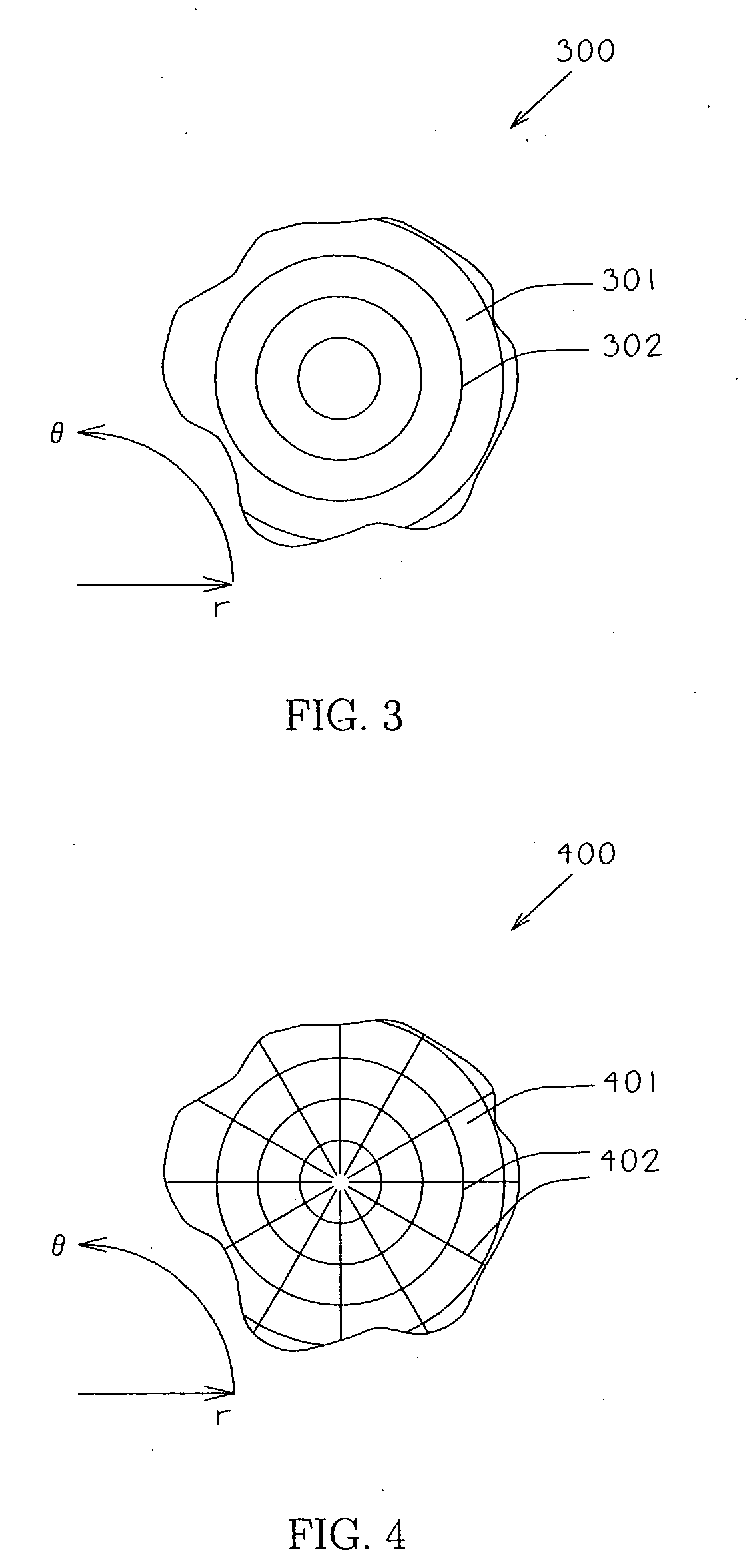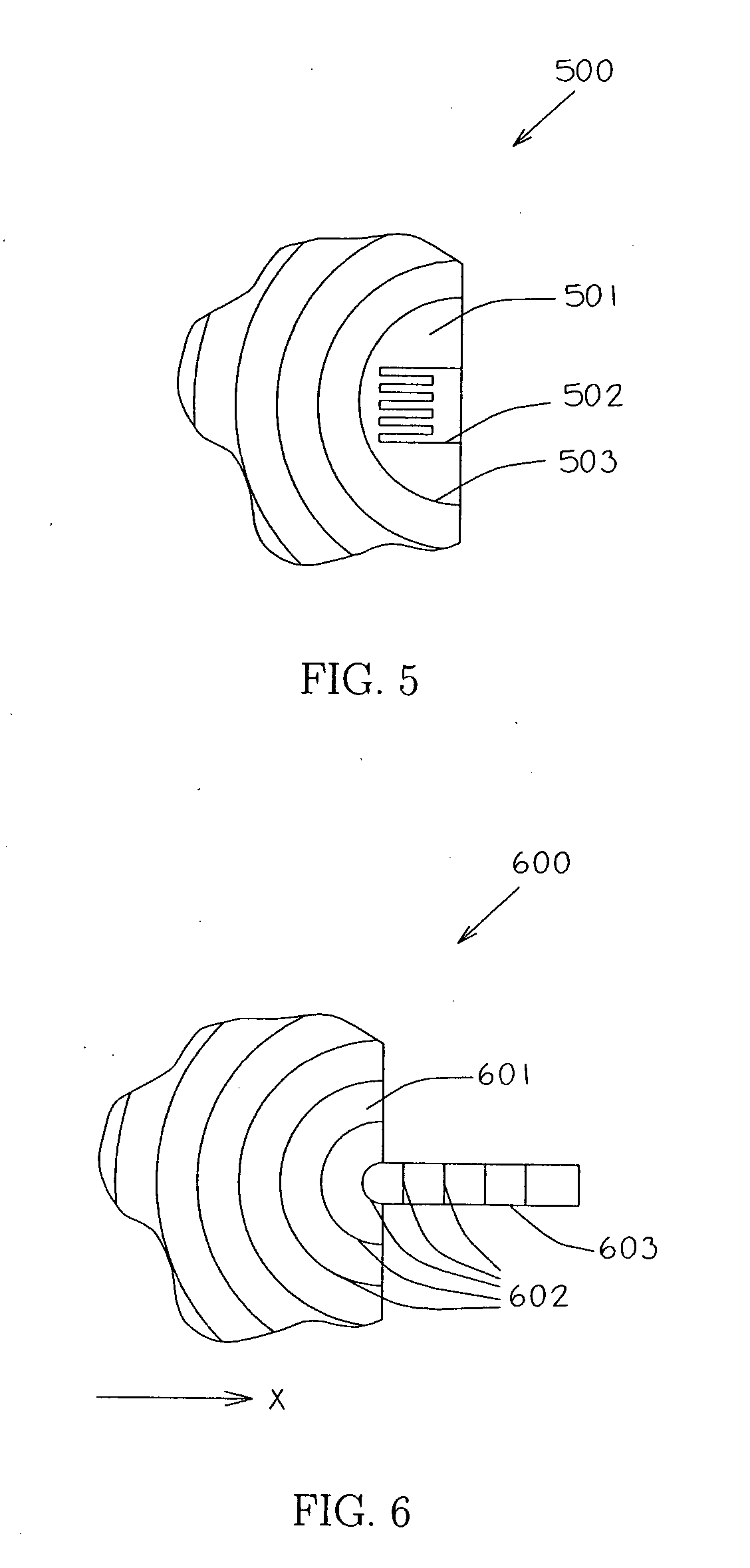Multi-purpose multi-function surface-tension microfluidic manipulator
a multi-functional, surface-tension technology, applied in the direction of positive displacement liquid engine, laboratory glassware, instruments, etc., can solve the problems of static surface tension heterogeneity, cumbersome instruments of most preconcentrators, and limited fluid to a predefined rou
- Summary
- Abstract
- Description
- Claims
- Application Information
AI Technical Summary
Benefits of technology
Problems solved by technology
Method used
Image
Examples
Embodiment Construction
[0043] The microfluidic manipulator is illustrated in ten embodiments in FIGS. 1-10. In all of these embodiments, not drawn to scale, the microfluidic manipulator has a surface upon which the analyte vapors are allowed to adsorb. The manipulator is provided with individually controllable thermal elements that produce thermal gradients on the surface and control the temperature on the surface. The thermal elements may take the form of non-intersecting lines in FIG. 1, an X-Y orthogonal system of lines in FIG. 2, non-intersecting closed lines in FIG. 3, an R-θ system of orthogonal lines in FIG. 4, a combination of patterned lines in FIG. 5, a combination of thermal elements and a micro-electro-mechanical-system (MEMS) sensor / detector as in FIG. 6, collectively controlled thermal elements as in FIG. 7, an array of dots in FIG. 8, a stochastic system of dots of various sizes as in FIG. 9, and a combination of line and dots as in FIG. 10. Fluids are adsorbed and desorbed at selected loca...
PUM
 Login to View More
Login to View More Abstract
Description
Claims
Application Information
 Login to View More
Login to View More - R&D
- Intellectual Property
- Life Sciences
- Materials
- Tech Scout
- Unparalleled Data Quality
- Higher Quality Content
- 60% Fewer Hallucinations
Browse by: Latest US Patents, China's latest patents, Technical Efficacy Thesaurus, Application Domain, Technology Topic, Popular Technical Reports.
© 2025 PatSnap. All rights reserved.Legal|Privacy policy|Modern Slavery Act Transparency Statement|Sitemap|About US| Contact US: help@patsnap.com



